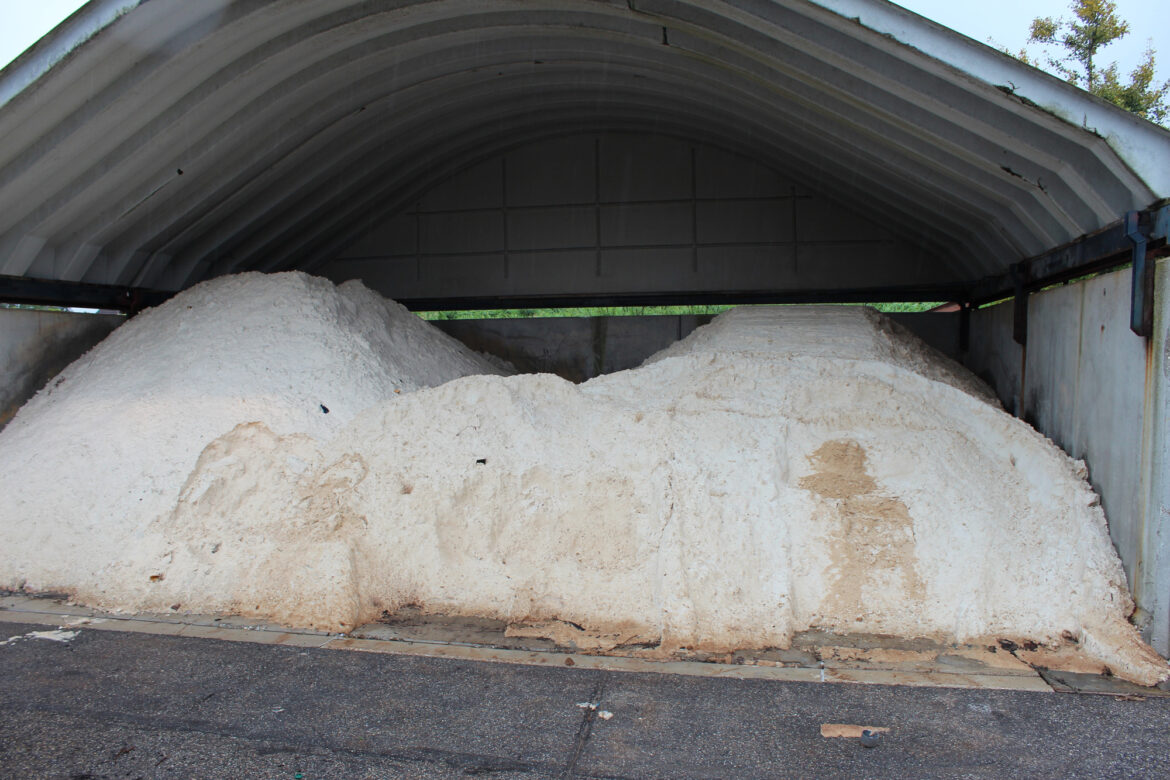
Bulk Salt Storage Mistakes That Cost Contractors Money
For professional landscapers and snow removal contractors, bulk salt and road salt are critical tools during the winter season. But storing these de-icing products the wrong way can lead to clumping, contamination, runoff, and major product loss. And when every ton counts, poor storage practices quickly translate to lost profits.
Here’s a breakdown of the most common bulk salt storage mistakes contractors make—and how to fix them before winter hits.
Mistake #1: Skipping a Proper Storage Structure
Leaving bulk salt in open piles exposes it to rain, snow, and humidity. Moisture causes clumping, dissolves the salt, and creates runoff that washes product (and profits) away. Not to mention, it can violate local environmental regulations.
Solution:
Use a dedicated storage structure. This doesn’t mean you need a massive permanent building—fabric-covered hoop barns, dome shelters, or even reinforced tarp systems can work. The key is keeping road salt dry and contained. Make sure the cover prevents water intrusion from all directions, especially at the base, where meltwater often creeps in.
Mistake #2: Inadequate Base and Drainage
Placing bulk salt directly on bare ground or asphalt allows moisture from below to seep in. Over time, the salt will absorb water and break down, forming hard clumps or becoming unusable sludge.
Solution:
Invest in a solid, impermeable base like concrete with proper drainage. Sloped floors help move water away from the pile. Adding containment curbs or retaining walls also helps keep the material in place and prevents leaching into surrounding soil.
Mistake #3: Mixing Old Salt with New
It’s tempting to dump a new delivery of de-icing products on top of last season’s leftovers. But this leads to uneven product quality and inconsistent performance. Worse, it hides degraded salt at the bottom that will only come back to bite you when it’s too late to fix.
Solution:
Practice first-in, first-out (FIFO) storage. Use up older salt before adding new. Suppose you must combine batches, at least mix thoroughly to avoid creating hotspots of clumped or low-quality material. Clearly label each delivery date if you’re storing large volumes.
Mistake #4: Poor Coverage During Use
During busy snow events, contractors often leave storage bays open for quick loader access. While this saves time, it also invites snow, rain, and moisture inside—especially if wind is blowing sideways.
Solution:
Use fast-closing tarps, sliding doors, or even loader-friendly flaps to maintain coverage during operation. If you use an open-sided structure, position it with the opening away from prevailing winds and precipitation to minimize exposure.
Mistake #5: Ignoring Pile Management
Sloppy pile management wastes salt and slows operations. Contractors often overfill storage areas or dump salt unevenly, causing spillage and compaction that reduces usable volume.
Solution:
Keep the pile neatly shaped—ideally in a conical or pyramid form—to shed water and reduce surface area. Avoid driving equipment directly on the pile, which compresses salt and leads to clumping. Train crews to load and unload efficiently and safely.
Mistake #6: Contamination from Equipment or Debris
If loaders, trucks, or surrounding debris contaminate your road salt, the result is poor melting performance and uneven spreading. Contaminants like soil, sand, or even oil can compromise the product.
Solution:
Clean your storage area regularly. Keep equipment maintained and free from leaks. Assign designated “clean zones” for salt to ensure nothing foreign mixes with your de-icing products. Small habits make a big difference in salt quality.
Mistake #7: No Inventory Tracking
Without tracking how much salt comes in and out, it’s easy to lose control of inventory. This leads to overordering, underordering, and waste.
Solution:
Set up a basic inventory system. Even a spreadsheet tracking delivery dates, usage volumes, and remaining stock can help you forecast better. More advanced contractors use scales or GPS-equipped loaders to track usage in real-time.
Mistake #8: Not Preparing for the Off-Season
Leaving leftover salt in a poorly maintained pile over the summer leads to heavy degradation by the time winter comes back around. Moisture builds up, pests move in, and valuable salt becomes garbage.
Solution:
Before the season ends, tighten up your storage setup. Cover the pile securely, elevate and seal the base if needed, and conduct a quality check on what’s left. A little off-season prep can save thousands in product loss come next winter.
The Bottom Line
Salt isn’t cheap—and every ton wasted is money down the drain. By avoiding these bulk salt storage mistakes, contractors can save time, improve safety, and maximize the performance of their de-icing products all season long.
A well-managed salt supply means fewer headaches, happier clients, and better bottom lines. Don’t let poor storage cost you when it matters most.
